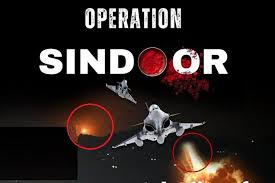New Revelations on Operation Sindoor’s Pause: Beyond Pakistan

A temporary halt with permanent geopolitical lessons.
After a big terror attack in Pahalgam targeting Hindus, India launched Operation Sindoor to punish terrorists, destroying terrorist camps in Pakistan. The operation showcased India’s military superiority and advanced technological edge. However, India suddenly decided to pause the operation after a request from Pakistan. Shortly after, US President Donald Trump claimed that he had forced India to agree to a ceasefire. The Indian government has consistently denied Donald Trump's claim. According to New Delhi, there was no formal ceasefire; it is a temporary operational pause. Officially, Operation Sindoor is active, and a second phase, "Operation Sindoor 2," could be launched at any moment.
The temporary operational pause was quickly labeled as a "ceasefire" by Western media and Pakistani commentators, which sparked confusion. Critics questioned why India stopped the operation even after having military superiority.
Domestic leaders such as Rahul Gandhi (Indian National Congress) and public figures like Prashant Kishor and Khan Sir openly questioned the government’s decision. The Indian National Congress party & INDI Alliance, in particular, aligned themselves with Trump’s narrative, suggesting external pressure forced India to agree to a ceasefire.
However, many analysts said that Trump’s claims were primarily driven by a desire to boost his global image and perhaps angle for a Nobel Peace Prize. Recent events suggest that his statements were more about personal political ambitions than reality.
Now, a new detail has come out about this operational pause. Recently, India’s Deputy Army Chief spoke openly about Operation Sindoor, revealing key details previously hidden from the public. His statements shed new light on the strategic thinking behind the pause and India's broader security challenges.
He revealed that while Pakistan was the visible adversary, the conflict involved a complex three-way nexus including China and Turkey. For the first time, a senior Indian military official openly stated that Pakistan was receiving real-time operational inputs and support from China and Turkey. These remarks went viral, highlighting why military leaders viewed the operational pause not as a sign of weakness but as a calculated strategic move.
The Deputy Army Chief further explained that China provided Pakistan with extensive military support during Operation Sindoor, with Pakistan sourcing 81% of its military hardware from China in recent years. He highlighted China’s use of the “killed by a borrowed knife” strategy, hurting an adversary through a proxy instead of direct conflict. China effectively used Pakistan as a live laboratory to test its missile and air defense capabilities.
This move is seen as preparation for a potential future conflict over Taiwan. By supporting Pakistan’s aggression, China gathers vital data without committing to open war. Also, Turkey has played a crucial role by supplying Bayraktar drones to Pakistan during Operation Sindoor and sending experts to assist with their deployment. This level of support was previously unknown to many, challenging the belief that Pakistan was largely isolated.
The new revelations make clear that if India resumes Operation Sindoor, it will be facing not just Pakistan, but a much larger coalition of adversaries.
Recent geopolitical developments are linked to the issue surrounding the Dalai Lama. Recently, the Dalai Lama said that the next Dalai Lama will be chosen by the Gaden Phodrang Trust, not by China. The Indian government is openly supporting the Dalai Lama, which has provoked an angry response from China, along with warnings directed at India that highlight the ongoing strategic rivalry between the two nations. While China maintains strong ties with Russia, India is gradually reducing its dependence on Russian arms and striving for greater self-reliance.
If Operation Sindoor is restarted or any new conflict erupts, there is a strong possibility of direct Chinese intervention.
From the first phase of Operation Sindoor, India learned many important lessons.
India now better understands Pakistan’s actual capabilities, and how much Chinese support they get, and how their weapons perform. Now, India is planning with its Army, Navy, and Air Force about future integrated attacks. India also exposed Pakistan’s nuclear threats as a bluff; despite repeated warnings from Pakistani leaders, India did not back down.
Now, India is currently preparing with the understanding that China and Turkey may openly support Pakistan. As a result, India's strengthening of its air defense systems and addressing supply chain gaps have become urgent priorities. One significant advantage for India is that China has not yet provided Pakistan with fifth-generation fighter jets.
The Deputy Army Chief acknowledged that some crucial equipment did not arrive on time, impacting the operation's momentum. He said, "Delays from our manufacturers hurt us deeply. When asked to deliver urgently, many companies promised, but later failed to meet timelines."
The Deputy Army Chief's disclosures clarify that the pause in Operation Sindoor was not a sign of weakness, but rather a strategic recalibration. Through this operation, India gathered critical intelligence on enemy capabilities, reassessed vulnerabilities in its defense supply chain, and exposed the extensive support network backing Pakistan.
These insights are essential as India prepares for a future where conflicts may extend beyond a single hostile neighbor. Strengthening self-reliance, addressing supply gaps, and enhancing air defense capabilities will shape India's readiness in the coming years.
The Deputy Army Chief's statement reflects the strategic thinking of both the Army and the Indian government.